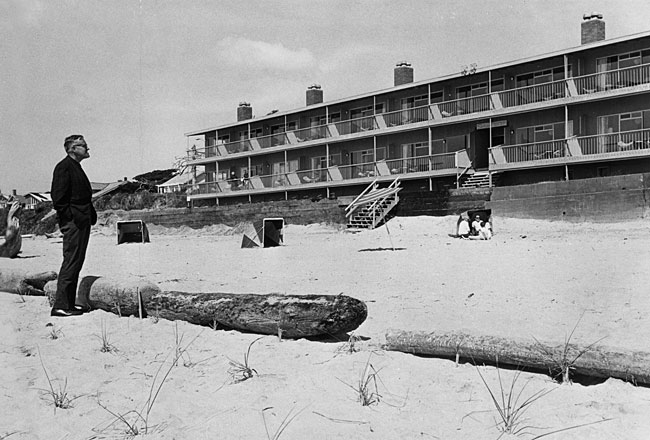 Governor Tom McCall looks at Cannon Beach’s Surfsand Motel in 1967. The owner, Bill Hay, wanted this beach area for the use of motel guests only. He set up a log perimeter and instructed his "Cabana Boys" and other employees to tell people who were not staying at the motel to leave the "private beach." The action exposed a loophole in existing state law and sparked a legislative conflict about public access to beaches. The Beach Bill was the product of the debate that pitted proponents of property rights against those favoring more public access protections. (Oregon Historical Society)
Governor Tom McCall looks at Cannon Beach’s Surfsand Motel in 1967. The owner, Bill Hay, wanted this beach area for the use of motel guests only. He set up a log perimeter and instructed his "Cabana Boys" and other employees to tell people who were not staying at the motel to leave the "private beach." The action exposed a loophole in existing state law and sparked a legislative conflict about public access to beaches. The Beach Bill was the product of the debate that pitted proponents of property rights against those favoring more public access protections. (Oregon Historical Society)
About the Bill
The final bill as signed into law declared all wet sand lying within 16 vertical feet of the low tide line to be the property of the state. Moreover, it recognized public easements of all beach areas up to the line of vegetation. The law required that property owners seek state permits for building and other uses of the ocean shore and it declared that the public would have free and uninterrupted use of the beaches.
At the bill signing, McCall honored former Governor Oswald West, author of the 1913 bill declaring all state beaches to be a public highway, thus maintaining public access. He quoted West on protecting the state's beaches: "No local selfish interest should be permitted, through politics or otherwise, to destroy or even impair this great birthright of our people."